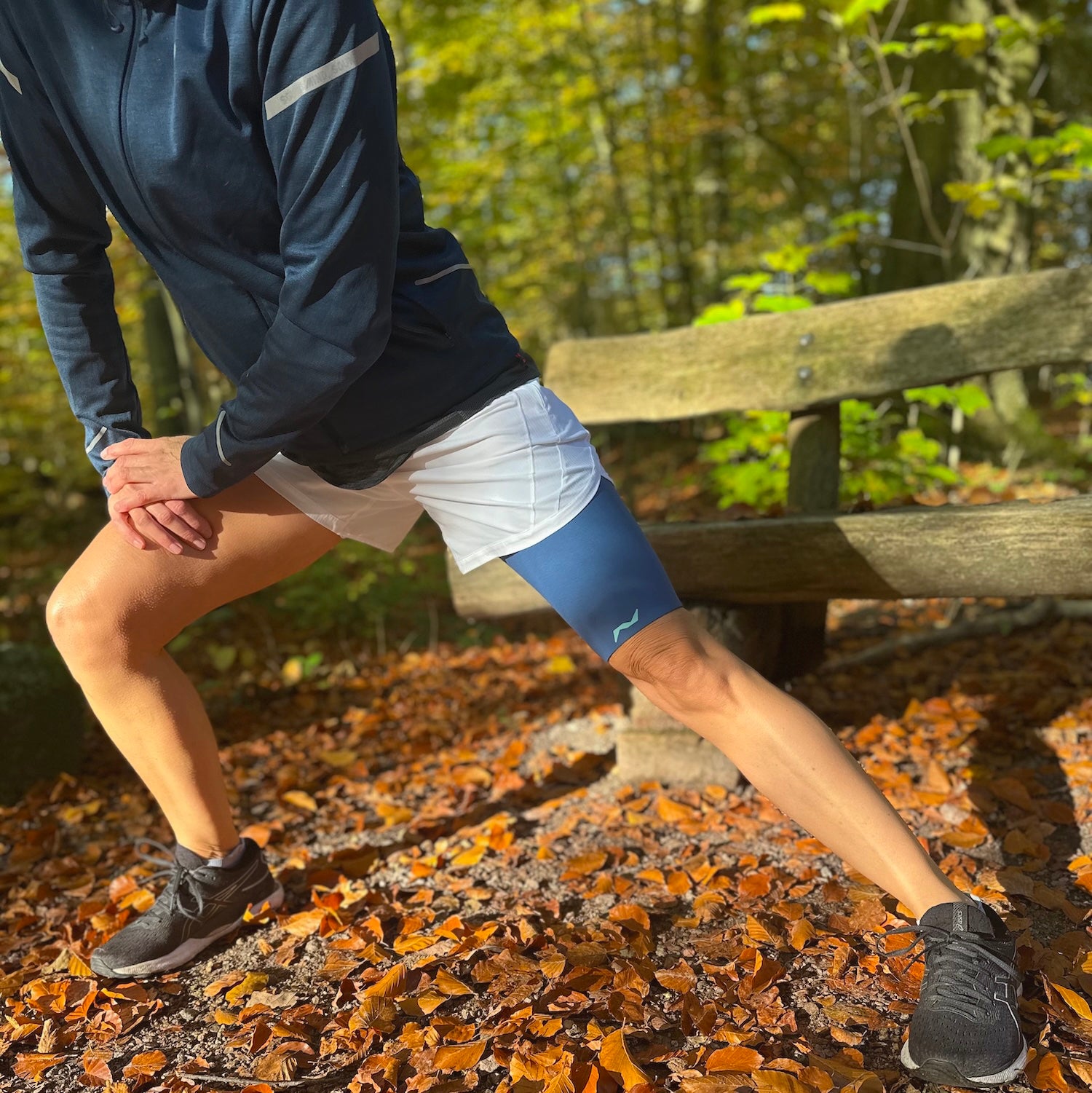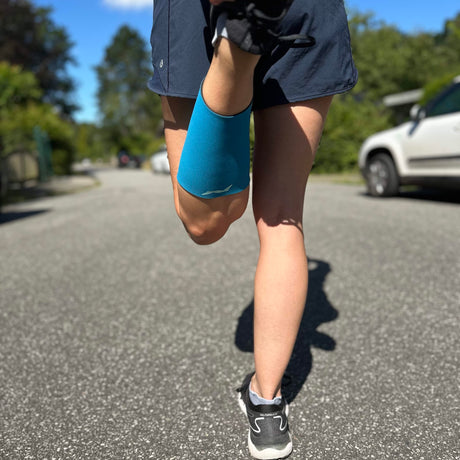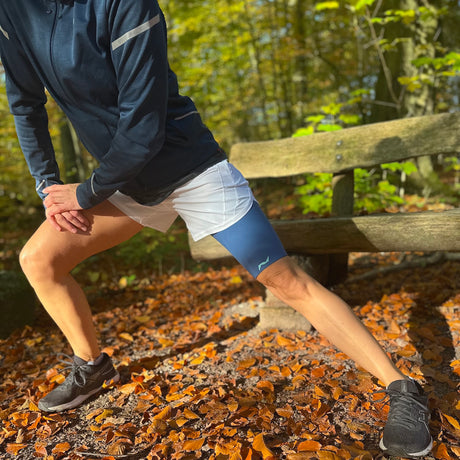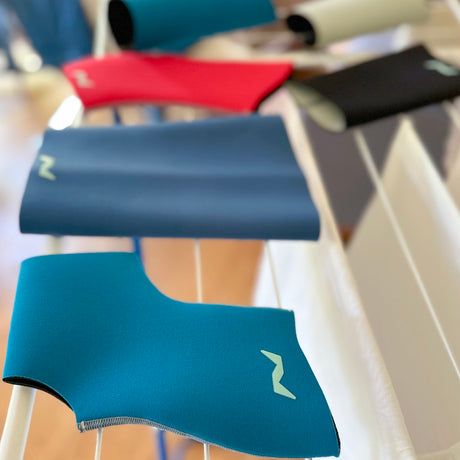Why should you warm up?
Warming up activates your whole body and brings it up to 'operating temperature': your body temperature rises, your muscles are better supplied with blood, tendons and ligaments become more elastic and increased production of synovial fluid protects your joints and prepares them better for the upcoming training session.
You increase your flexibility and mobility and thus protect your muscles and joints. The more flexible you are, the less prone to injury you are - i.e. with the right warm-up you can specifically prevent injuries.
A warm-up session not only improves your mobility, but also activates the coordination of nerves and muscles. This increases your ability to concentrate and perceive, so that you are also mentally better prepared for your training.
Last but not least, you can even increase your performance with targeted warm-ups. Stretching exercises at the end of a training session can also have a relaxing effect. You can find a link below on the topic of "cool down"!
What is the best way to warm up?
Sports scientists differentiate between active-dynamic and passive-static stretching. Both types of stretching serve to improve mobility and prevent injuries.
While static stretching used to be common practice, sports scientists have long been recommended dynamic stretching for the warm-up and static stretching as a cool-down or as an independent stretching unit after a thorough warm-up.
In static stretching, you hold a stretching position for a longer period of time, breathe deeply into the stretch and stretch the muscle, i.e. the muscle is lengthened and the muscle tension is reduced. The stretched muscles can no longer be tensed as quickly and forcefully. Static stretching is therefore particularly suitable for the cool down or for isolated fitness exercises.
Dynamic stretching also aims to improve mobility and flexibility, but the focus here is not on individual muscles but on mobilizing the whole body. The muscles are guided through controlled active movement patterns that specifically activate the entire musculature and improve performance preparation.
Unlike static stretching exercises, dynamic warm-ups increase overall performance, e.g. speed and jumping power, and are therefore particularly recommended for "explosive" and "high-speed" activities, e.g. before a football or basketball match or an athletics competition.
While static stretching relaxes the muscles, dynamic stretching puts them into work mode.
The following applies equally to both types of stretching:
Breathe relaxed and evenly when stretching, do not hold your breath
Never stretch so much that it hurts, a slight tension is ok
Do not stretch if you have an injury or sore muscles
How long should you warm up?
Your warm-up should last between 8 and 15 minutes. Do 6-8 exercises for 15 to 30 seconds each, repeating them several times. You want to activate your body, but not exhaust it. Start your training or competition immediately afterwards if possible.
Type of exercises
First, we want to activate the whole body and move all the large muscle groups to warm them up. Only in the second step do you warm up for your specific training.
General warm-up exercises
- Easy running (warm-up or on the spot)
- Jumping jacks
- Jumping rope (with or without rope)
- Shadow boxing
- Back heel kick
- Arm circles
- Standing trunk rotation
- Standing forward bend with upper body twist
- Lunges with upper body twist
- Arm and leg stretches in quadruped position
- Straight-leg march
- Forward lunges
- Lateral lunges
- Hip cradles
- Down dog to plank
- World's Greatest Stretch
- Inch worm
Specific warm-up exercises for your sport
Now that you have activated all of your muscles, it's time for the specific warm-up exercises for your sport. For example, if your sport involves quick changes of direction (squash, football), consider movement-based and side-to-side movements. For overhead movements (such as basketball, climbing, tennis), include movements that activate your shoulder complex.
Coming up in the next few weeks are posts on specific warm-up programs, including for tennis, soccer, running and more.
Stay tuned...





